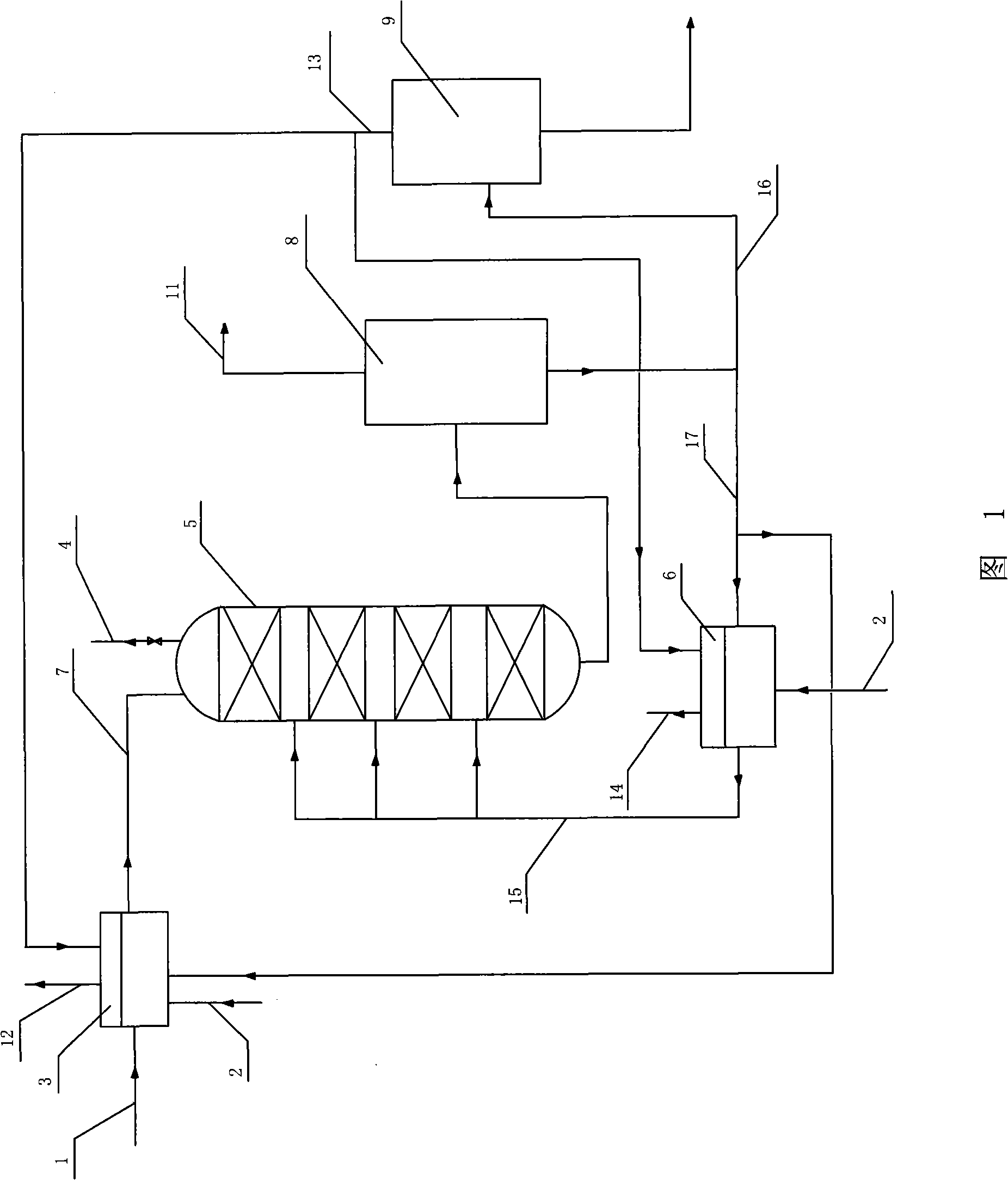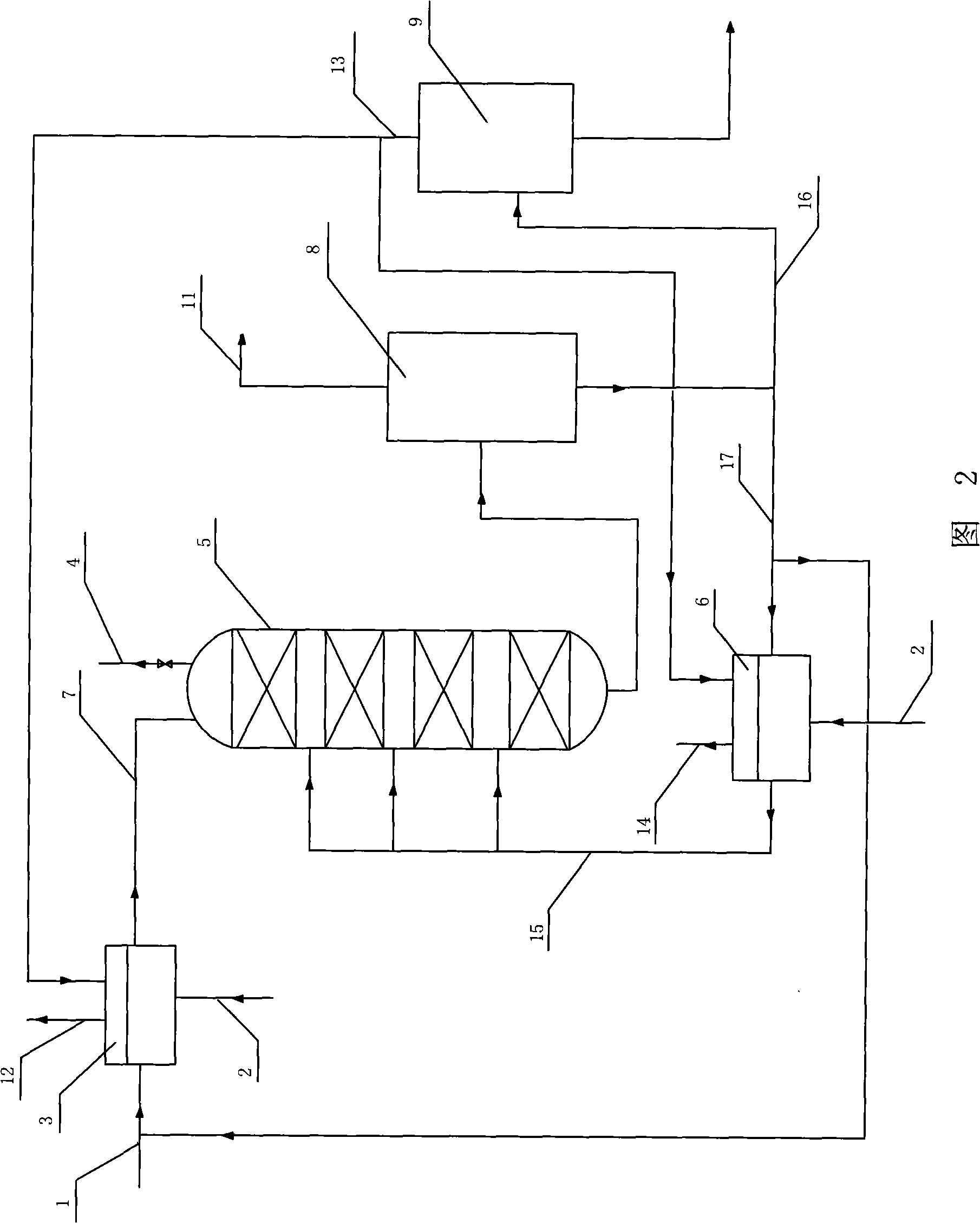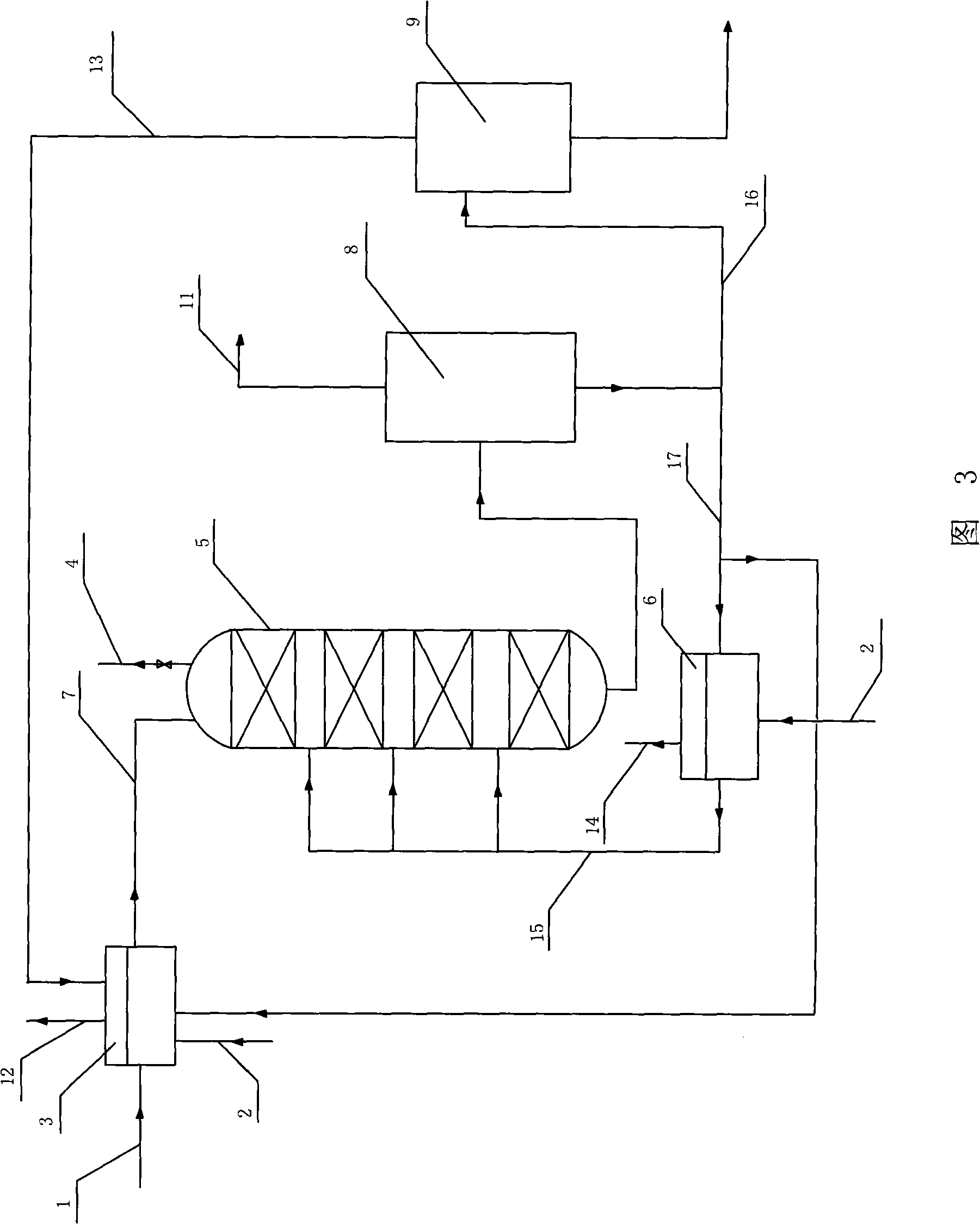Liquid-solid two-phase hydrogenation method for hydrocarbon oil
A hydrocarbon oil and additive technology, applied in the field of hydrocarbon oil hydrogenation, can solve the problems of reducing the mass transfer and reaction speed of fresh raw material oil and hydrogen, and the intensity of the reaction, achieving low operating costs, low hydrogen loss, and low sulfur and nitrogen content Effect
- Summary
- Abstract
- Description
- Claims
- Application Information
AI Technical Summary
Problems solved by technology
Method used
Image
Examples
Embodiment Construction
[0037]As shown in Figure 1, the reactor shown in the figure is a four-stage catalyst bed. Fresh raw oil 1 is mixed with hydrogen gas 2 and part or zero cycle oil 17 in the presence of a stream of solvent or diluent 13 in the first mixer 3 to form a mixture stream from which first mixer exhaust gas 12 is discharged Afterwards, the mixture flow becomes the reactor feed 7, and the reactor feed 7 enters the first section of the catalyst bed of the reactor 5 from the top of the reactor 5 to contact and react with the catalyst, and another part or all of the circulating oil 17 is mixed with hydrogen 2 and another The solvent or diluent 13 is mixed in 6, and the exhaust gas 14 of the second mixer is removed to become a saturated hydrogen-dissolved circulating oil 15, and the saturated hydrogen-dissolved circulating oil 15 is obtained from the catalyst bed of the first stage and the second stage of the reactor 5 respectively. , between the second stage and the third stage catalyst bed...
PUM
 Login to View More
Login to View More Abstract
Description
Claims
Application Information
 Login to View More
Login to View More - Generate Ideas
- Intellectual Property
- Life Sciences
- Materials
- Tech Scout
- Unparalleled Data Quality
- Higher Quality Content
- 60% Fewer Hallucinations
Browse by: Latest US Patents, China's latest patents, Technical Efficacy Thesaurus, Application Domain, Technology Topic, Popular Technical Reports.
© 2025 PatSnap. All rights reserved.Legal|Privacy policy|Modern Slavery Act Transparency Statement|Sitemap|About US| Contact US: help@patsnap.com



